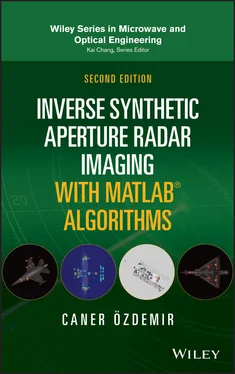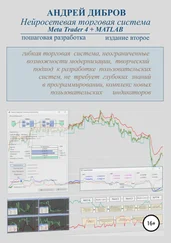18 SIR‐C/X‐SAR (1997). SIR‐C/X‐SAR image of Cape Cod, Massachusetts. www.jpl.nasa.gov/radar/sircxsar/capecod2.html(accessed 23 May 2020).
19 Trintinalia, L.C. and Ling, H. (1995). Interpretation of scattering phenomenology in slotted waveguide structures via time‐frequency processing. IEEE Transactions on Antennas and Propagation 43: 1253–1261.
20 Williams, A.B. and Taylors, F.J. (1988). Electronic Filter Design Handbook. New York: McGraw‐Hill.
2.1 Electromagnetic Scattering
Scattering is the physical phenomenon that occurs when an electromagnetic (EM) wave hits a discontinuity/nonuniformity or an object. The deviation of the reflected wave's trajectory or path is generally known as scattering .
The classification of scattering phenomena can be made according to the size of the scattering object (or the scatterer) with respect to the wavelength of the EM wave. Radar signals reflect or scatter in different forms depending on the wavelength of the EM wave and the shape of the object (scatterer). If the wavelength of the EM wave is much smaller than the size of the scatterer, the EM wave bounces back in a similar way to how light reflects from a large surface. This type of scattering is often called scattering in the optical region (Stover 1995). If the EM wave's wavelength is of comparable size of the scatterer, such as within a few wavelengths, some resonances may occur, and the scattering intensity may fluctuate considerably for different frequencies. The scattering direction is mainly affected by the incident wave direction in this region that is usually called Mie region (or resonant region) . This particular scattering type is, therefore, called Mie scattering . If the wavelength of the EM wave is much longer than the size of the scatterer, the wave is dispersed around the scatterer. This type of reflection is named as Rayleigh scattering (Brummund and Mesnier 1999; Zhong‐Cai et al. 2006).
Scattering types can also be classified according to the wave's trajectory from different structures that may have planar surfaces, curved surfaces, corners, edges, wedges, or tips. Below is the list of such scattering types that we may observe in most radar applications:
1 Specular scattering. When the EM wave experiences a mirror‐like reflection from a planar surface, this phenomenon is usually called specular reflection or perfect reflection (illustrated in Figure 2.1a). When the incoming wave makes an angle θi with the surface normal, the direction of the outgoing scattered wave makes the same angle θr = θi with the surface normal, obeying the Snell's law of reflection. Scattering of the EM wave from sufficiently large perfectly conducting plates is a good example of this type of scattering. Figure 2.1 Different scattering mechanisms: (a) specular reflection, (b) scattering from dihedral, (c) scattering from trihedral, (d) surface scattering, (e) edge diffraction, (f) tip diffraction, and (g) traveling wave scattering.
2 Multi‐bounce scattering. When the EM wave experiences multiple bounces around the object, it is called multiple scattering or multi‐bounce scattering. The reflections of EM waves from dihedral ( Figure 2.1b) and trihedral ( Figure 2.1c) corner reflectors are good examples of this type of scattering. If the reflectors are perfect electric conductors (PECs), the wave undergoes the laws of specular reflection at each plate and leaves the object in one outgoing direction. Most of the energy is reflected back in the opposite direction of the incoming wave if the angle between the plates is 90°.
3 Surface Scattering. This type of scattering mechanism is illustrated in Figure 2.1d. Generally, the surface of an arbitrary scatterer is not flat, so the wave scatters in various directions. For PECs, the direction of the outgoing ray of wave is again determined by the Snell's law. Since the normal direction of the surface changes for different points on the object's surface that is not planar, the direction of the reflection ray also changes such that the EM wave scatters in various directions as demonstrated in Figure 2.1d.
4 Edge/Tip Scattering. Another type of EM scattering occurs when an EM wave impinges with an edge or a corner (see Figure 2.1e) or a tip (see Figure 2.1f) of an object. For such situations, the wave scatters in all directions in space, and this type of reflection is often called diffraction. When an EM wave hits an edge, some energy reflects in the backward direction, some scatters in the direction that makes the Snell's angle with one plate, some scatters in the direction that makes the Snell's angle with the other plate, and the rest of the energy reflects in all other directions.
5 Traveling Wave Scattering. When the wavelength is of comparable order with the object size, traveling waves occur along the object. This wave travels along the object, and the scattering occurs when the wave impinges upon the discontinuity at the edge of the target as illustrated in Figure 2.1g. The multiple scattering from wires is a good example of this type of scattering.
EM scattering is, of course, the key inspiration for radar theory and radar imaging. In fact, what an imaging radar displays is nothing but the scattered energy from a target or a scene. With this insight, imaging radar can be thought of as analogous to an optical imaging system. While the optical image displays the light reflectivity of an object or a scene, the radar image displays the EM reflectivity or scattering from a target or a scene. In radar images, the scattering from canonical targets (usually man‐made objects) provides mostly specular reflections. Therefore, the image consists of a number of localized energy points that are also known as scattering centers . Especially at high frequencies, the scattering center representation provides various advantages, which will be studied in Chapter 7.
In this section, we will derive the far‐field EM scattering from a perfectly conducting object. This formulation is closely parallel with the derivations that can be found in References (Chu et al. 1991; Bhalla and Ling 1993). The geometry of the problem is assumed to be as shown in Figure 2.2where a PEC object is illuminated by a plane wave with exp( jωt ) time dependence and incident wave vector of  The incident electric and magnetic wave fields are given by
The incident electric and magnetic wave fields are given by
(2.1) 
and
(2.2) 
where E oand  give the magnitude and the polarization direction of the incident electric field. According to the physical optics (PO) theory (Balanis 1989), the current induced on the surface of the object is given by the following well‐known formula:
give the magnitude and the polarization direction of the incident electric field. According to the physical optics (PO) theory (Balanis 1989), the current induced on the surface of the object is given by the following well‐known formula:

Figure 2.2 Electromagnetic scattering from a perfectly conducting object.
Читать дальше

 The incident electric and magnetic wave fields are given by
The incident electric and magnetic wave fields are given by

 give the magnitude and the polarization direction of the incident electric field. According to the physical optics (PO) theory (Balanis 1989), the current induced on the surface of the object is given by the following well‐known formula:
give the magnitude and the polarization direction of the incident electric field. According to the physical optics (PO) theory (Balanis 1989), the current induced on the surface of the object is given by the following well‐known formula:











